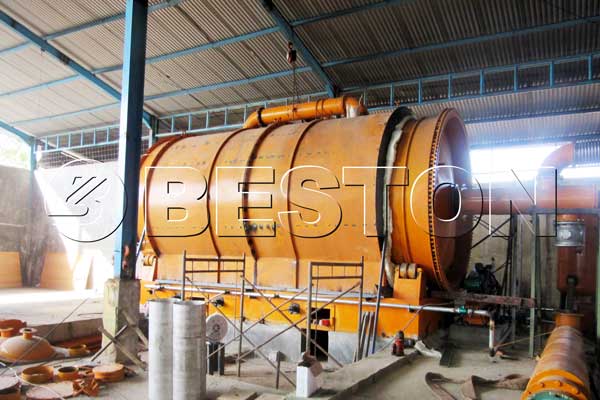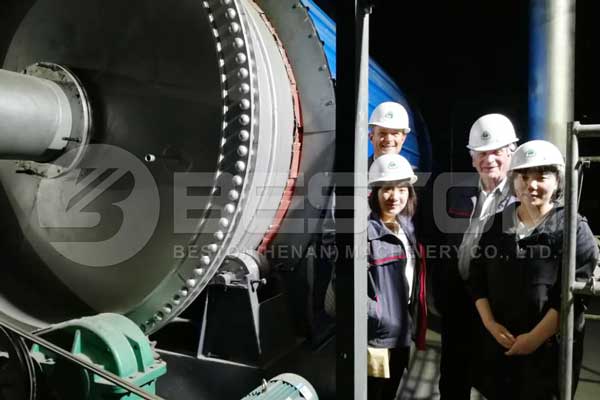Rubber pyrolysis machine has made it more environmentally friendly and economically profitable than ever for businesses to get started in the tire recycling industry. The number of waste tires requiring processing each year globally is in the billions. Consequently, demand for and investment in tire to oil machines is increasing year on year. Some of the top manufacturers of tire recycling machines have customers in dozens of countries around the world, including Egypt, Norway, South Africa, the Philippines, Germany, Australia and more.
Pyrolysis Process
The rubber pyrolysis basically involving heating waste rubber to very high temperatures in an oxygen-free reactor to cause the vaporization of fuel oils of different viscosities. The fuel oil vapor is then sent through water cooling systems where it condenses into liquid fuel oil.

Waste Tire Preparations For Pyrolysis
Before tires enter the reactor they need to be shredded and dried. If the humidity of the waste materials exceeds 15%, the pyrolysis plant will not be as efficient. Fortunately, there are many great automatic tire shredder for sale online for very affordable prices. In addition to drying and shredding waste tires, operators that want to extend the lifespan of the reactor should also remove all the steel wire before the shredded tires are transported into the main chamber.
End Products
The four end products from the waste tire pyrolysis process are:
1. Fuel Oil
2. Carbon Black
3. Combustible Gas
4. Steel Wire

A typically car tire is comprised of 8% combustible gas, 30% carbon black, 50% fuel oil and 12% steel wire. Consequently, 10 tons of scrap tires can be converted into 5 tons of fuel oil using a high-grade rubber pyrolysis reactor. For fast profits, the unprocessed fuel oil can be sold directly to industries that have industrial machinery that runs on heavy fuel. For larger profits, a distillation machine can be used to convert the heavy tire fuel oil into diesel oil or gasoline by crude oil distillation unit.
Steel wire from road tires can obviously be sold directly to metal refineries where it is melted down and converted into products for the construction industry, such as steel support beams. Carbon black meanwhile can be converted into charcoal blocks using briquetting equipment. It can also be reprocessed into high-grade carbon via carbon black grinding machinery.
The combustible gas produced during tire pyrolysis can be used as an alternative fuel to power the reactor, which can make the pyrolysis process effectively self-sustaining and thus reduce fuel costs for tire recycling facility operators. Alternatively, the combustible gas can be stored in tanks and sold on.
Green Technology
Arguably one of the biggest benefits of the tire to fuel plant it that since rubber is vaporized rather than burned, the pyrolysis process produces zero toxic emissions. This means that waste tires can be converted into useful commodities without causing any environmental damage.
Pyrolysis technology has contributed to a green revolution in the waste processing industry. After all, in addition to processing waste road tires, a pyrolysis reactor can also be used to transform other types of waste, such as plastics, rubber, oil sludge, medical waste, and municipal waste, into profitable commodities.